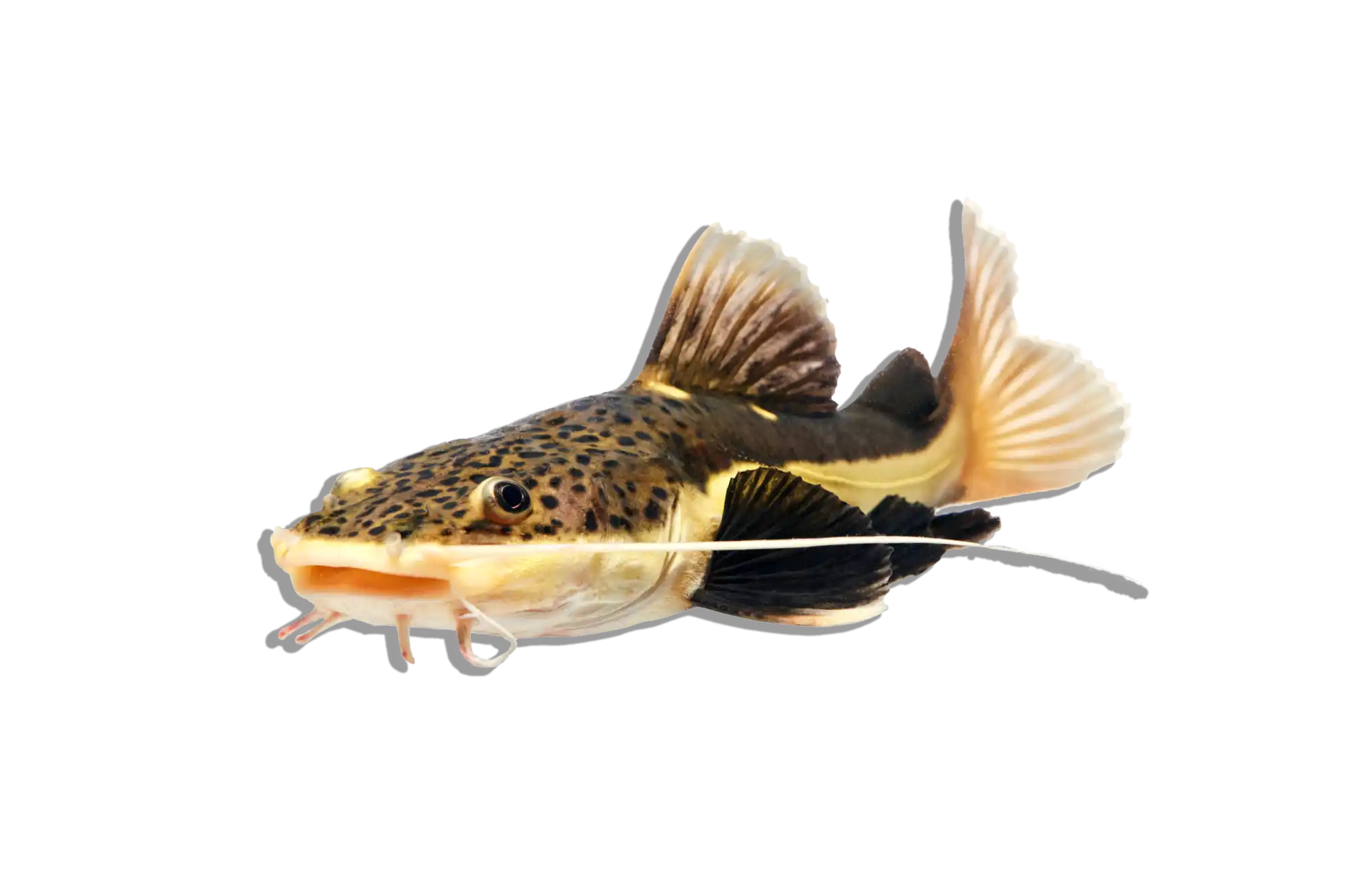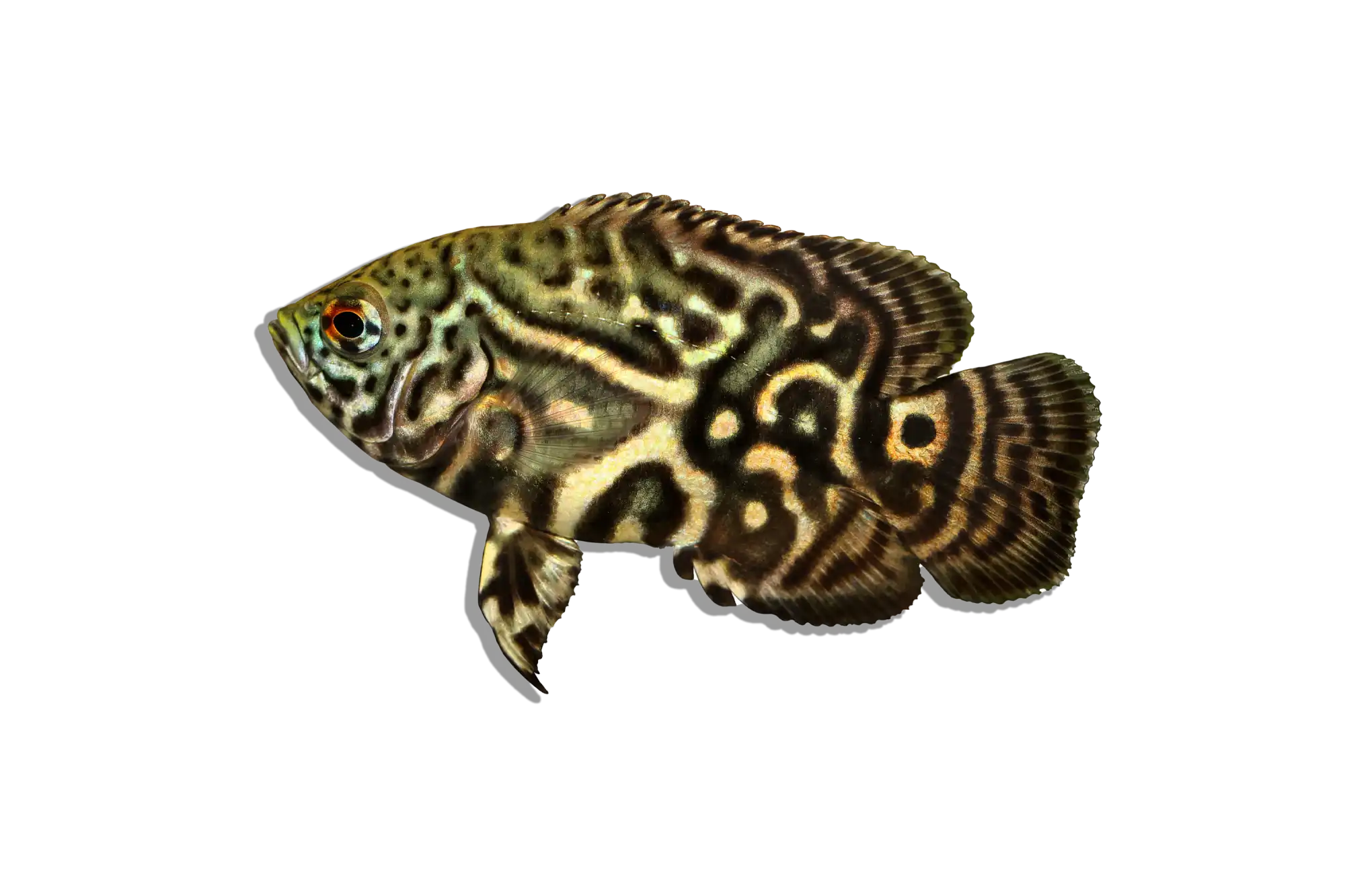Description
Common Name: African Tiger Scat
Scientific Name: Scatophagus tetracanthus
Other Names: African Scat, Tiger Scat
The African Tiger Scat is a striking and unique freshwater fish known for its bold, tiger-like stripes and robust, oval-shaped body. This species exhibits a combination of dark vertical stripes and a silvery to greenish body color, making it an eye-catching addition to any large aquarium. The African Tiger Scat is a true freshwater species, unlike its more brackish relatives, and it is highly sought after by aquarists for its distinctive appearance and hardy nature.
Habitat and Distribution: The African Tiger Scat is native to various freshwater river systems in Africa, particularly in countries such as Nigeria, Cameroon, and Ghana. These fish inhabit slow-moving rivers, lakes, and floodplains with plenty of vegetation and submerged structures. The water in their natural habitat is typically warm, soft to moderately hard, and slightly acidic to neutral, with a sandy or muddy substrate.
Size and Lifespan: In the wild and captivity, African Tiger Scats can grow up to 12 inches (30 cm) in length, although they often remain slightly smaller in home aquariums. Their lifespan can range from 10 to 15 years, depending on the care and conditions provided in the aquarium. Ensuring a proper diet, clean water, and adequate space are crucial for their longevity and well-being.
Diet and Behavior: African Tiger Scats are omnivorous, feeding on a variety of foods in the wild, including algae, detritus, small invertebrates, and plant matter. In an aquarium, they should be provided with a varied diet that includes high-quality vegetable-based pellets, algae wafers, and fresh vegetables such as spinach, lettuce, and zucchini. They can also be given occasional protein sources like brine shrimp and bloodworms. These fish are generally peaceful but can be territorial, especially during feeding times. They are active swimmers and prefer a well-planted tank with plenty of open space to move around.
Breeding and Reproduction: Breeding African Tiger Scats in captivity is rare and challenging due to their specific environmental needs. In the wild, they spawn in large groups, releasing eggs that drift with the currents. Creating similar conditions in captivity, such as a large, well-maintained tank with optimal water conditions and a nutritious diet, might encourage spawning behavior. However, successful breeding in home aquariums is uncommon and typically requires a specialized setup.
Aquarium Care and Tank Requirements: To keep African Tiger Scats, a large aquarium of at least 100 gallons is recommended to provide ample swimming space and accommodate their size. The tank should include plenty of plants, driftwood, and hiding spots to mimic their natural habitat and reduce stress. A sandy or fine gravel substrate is ideal, along with moderate water flow to simulate river conditions. Efficient filtration and regular water changes are essential to maintain water quality. Providing ample open space for swimming is crucial for their well-being.
Ideal Tank Mates: African Tiger Scats can be kept with other large, peaceful fish that share similar water parameter requirements. Suitable tank mates include larger tetras, peaceful cichlids, and non-aggressive catfish. Avoid housing them with very small fish, which may be seen as prey, or overly aggressive fish that may bully or stress them.
Difficulty Level: Intermediate to Advanced. While they are hardy and adaptable, their large size, specific dietary needs, and requirement for ample swimming space require attentive care and a well-maintained aquarium.
Water Parameters:
- Temperature: 75-82°F (24-28°C)
- pH: 6.5-7.5
- General Hardness (GH): 5-15 dGH
- Carbonate Hardness (KH): 4-10 dKH
- Ammonia: 0 ppm (ideal), up to 0.25 ppm (max)
- Nitrite: 0 ppm (ideal), up to 0.25 ppm (max)
- Nitrate: <20 ppm (ideal), up to 40 ppm (max)
Additional Information:
- The African Tiger Scat's unique pattern and active swimming behavior make it a captivating addition to any large aquarium, providing both visual interest and dynamic movement.
- These fish are known for their ability to graze on algae and plant matter, which can help maintain a clean and balanced tank environment.
- In their natural habitats, African Tiger Scats play a role in controlling populations of algae and detritus, contributing to the overall health of the aquatic ecosystem.
- Fun fact: African Tiger Scats are known to be highly adaptable and can thrive in a variety of freshwater environments, making them a resilient and versatile species in the aquarium hobby.




















